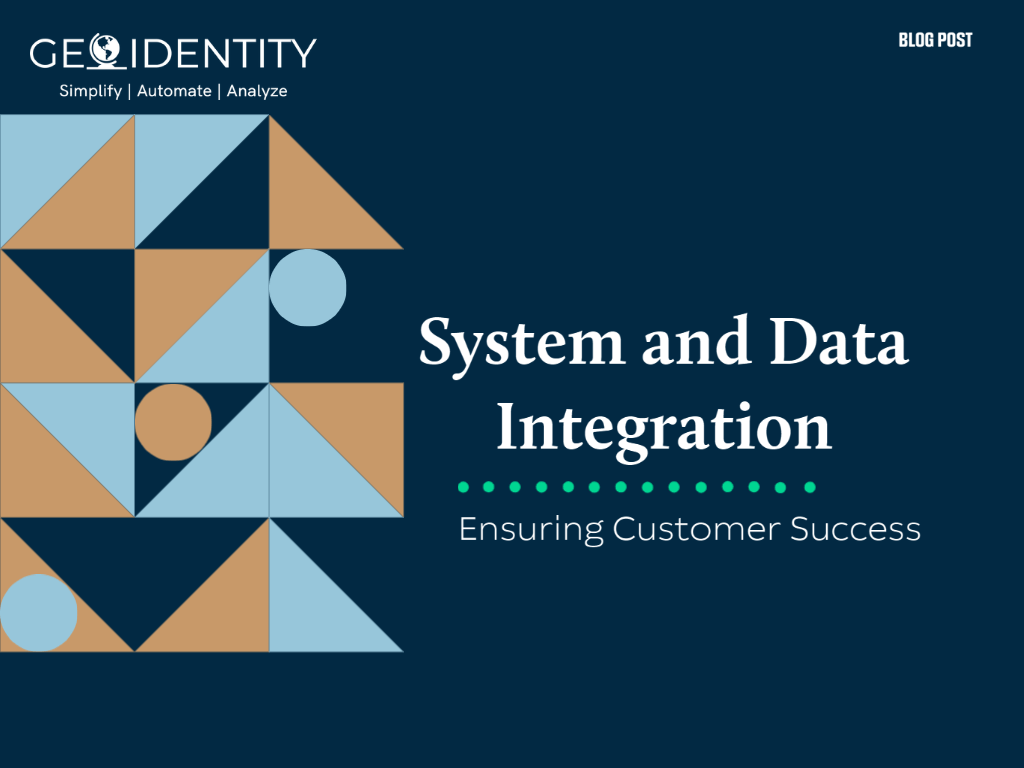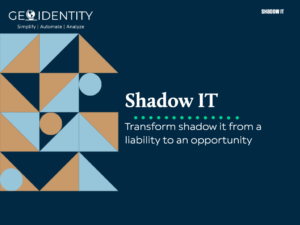System and Data Integration
Artificial intelligence, Predictive analytics and data science can provide tremendous competitive advantage to the modern enterprise as rapid progress is being made in technologies that can extract decision making insights from raw data. One of the first challenges that a CIO faces in deploying data analytics capabilities across the organization is ensuring fluid and easy access to accurate data. Legacy systems create data silos that can be difficult to break due to technology as well as governance challenges. Systems integration can address this issue by integrating systems of record applications leading to breaking of data silos and thereby simplifying IT processes that need to be deployed for data analytics workloads. Systems integration in itself can increase agility and productivity across the enterprise, with the additional advantage of setting up the enterprise for success in achieving data analytics based missions.
GeoIdentity has demonstrated successful implementations of enterprise architecture and systems integration platforms to support both operational and business analytics needs. We believe in developing close partnerships with various teams within the client enterprise and help analyze, design, engineer and implement a System Integration Platforms.
In one case we helped a large public utility integrate a number of their major IT systems including –
- Project Management Information System
- Customer Billing
- Work Order Management
- Financial System
- GIS / asset management
- SCADA

As shown in the diagram to the right shows existing integrations between various source and target systems in the enterprise, prior to the system integration project. This consisted of a landscape of multiple point to point integrations that were prone to failure, tedious to manage and expensive to maintain. GeoIdentity simplified the implementation architecture significantly with the effort resulting in estimated savings of >$2 MM in yearly IT systems integration and related operational costs.
GeoIdentity Approach to System Integration
Legacy point-to-point custom integrations can be complex to manage, and dramatically expand IT cost of ownership. They introduce spaghettification that grows exponentially complex over time (e.g. 10 systems may require up to 45 custom integrations)
GeoIdentity believes in a radically simplified enterprise approach to integration design that is largely configuration-based and simplified operational sustainment over time. By leveraging services oriented architecture, message based communication and self service capability for integration development, we deploy platforms that allow rapid modeling of business processes, capital projects, and other operational excellence initiatives. We help Information Technology teams in building capacity and capability to be adaptive to the enterprise wide needs and work towards leaner and modular approaches while delivering data analytics projects with well defined success criteria.

As highlighted in the diagram, each integration stack is built by identifying the source and target systems. Rather than develop custom integrations, a centralized integration platform leveraging pub/sub-queues is used to create asynchronously and decoupled data integrations using additional business logic APIs, logging, monitoring, reporting, and notifications services. The loosely coupled and modular design simplifies the overall design and allows leveraging of microservices architecture for business logic with a dramatically lower total cost of ownership combined with improved quality and consistency.
GeoIdentity helps identify challenges and solutions related to data and quality management engendered by sync issues, challenges with orchestrating data refresh intervals across systems, and maintaining enterprise master data definitions. Our master data management approach helps in establishing a source of truth for reporting of key indicators for the entire enterprise.
Our proposals to systems integration architecture follow the following core guidelines
- Avoid spaghettification with Point to Point Integrations
- Align with a Master Data Management (MDM) plan to maintain data integrity across critical Systems of Record
- Pub/Sub Architecture for resilient integration implementation capable of handling source/target system disruptions
- Leverage REST/SOAP APIs for Integration where possible to abstract system specific details away from integration logic
- Loosely Coupled Integrations – Ensure separation of workflow and business logic from data integrations components
- Centralized Logging, Monitoring and Notification services to allow consistency and reuse in shared integration components
- Disaster Recovery planning that emphasises potential data corruption resolution



